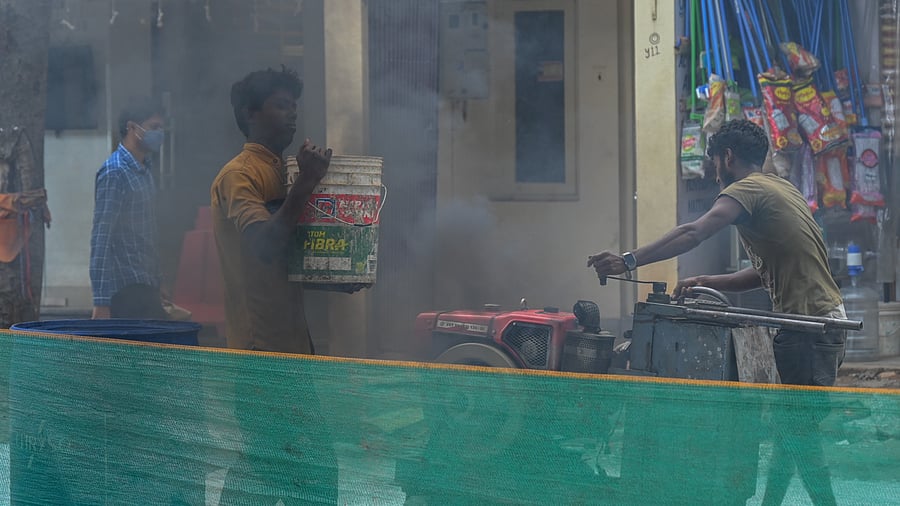
A major contributor to pollution is the increase in construction activities and poor control over industrial pollution.
Credit: DH Photo/S K Dinesh
The Centre for Study of Science, Technology and Policy (CSTEP) has warned that the air pollution levels in Karnataka’s tier-2 cites could go up by 40 per cent by 2030 due to non-implementation of various measures to check emissions. The study was conducted across 75 cities in 17 states. In Karnataka, Davangere, Kalaburagi and Hubballi-Dharwad have been classified as “non-attainment” cities due to the high air pollution there. At the airshed level (pollution sources beyond city boundaries), Davangere was found to have the highest particulate matter emissions due to the presence of industries beyond the city limits. Interestingly, another study by Smart Air, a social enterprise, has listed Madikeri, Mysuru, Mangaluru, Bagalakote, Chikkaballapura and Bengaluru among the 20 least-polluted cities in India. Yet, in none of these cities, the average PM2.5 levels was found to be below the WHO-recommended limit of 5 micrograms. For instance, the least-polluted city in the country, Imphal, had air pollution levels three times higher than the recommended limit. In Madikeri, the second least-polluted city, it was more than three times higher than the limit.
Several factors contribute to the increasing pollution levels in tier-2 cities. For long, these cities were left out of the conversation on urban development and renewal. It is only in recent years that some of the tier-2 cities are receiving focus in the areas of core infrastructure and sustainable environment. In Karnataka, with all the ‘development’ concentrated in Bengaluru, not much attention was given to building public transport in smaller cities, which has led to an increase in private vehicles there too, resulting in traffic congestion and air pollution. Another major contributor is the increase in construction activities and poor control over industrial pollution. In Madikeri and other parts of the Western Ghats, the biggest threat comes from over-tourism, with the fragile ecosystems unable to bear the pressure of increased human and vehicular traffic, which have significantly contributed to the increase in air pollution.
CSTEP has suggested shifting to cleaner fuels from coal, better road infrastructure, including the use of materials which reduce the degradation of roads, and stricter emission control norms for industries and vehicles. Implementing these steps are estimated to help reduce the pollution levels by about 35 per cent. The government should immediately begin to implement these measures to mitigate pollution both in the short and long term, along with other regulatory steps. Unless the government acts fast, it may be too late to save our tier-2 cities, which may well go the Bengaluru way, where high pollution levels have severely compromised the quality of life.
